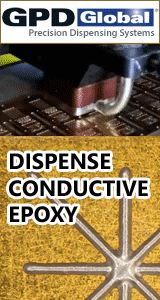Printed Circuit Board Assembly & PCB Design Forum
SMT electronics assembly manufacturing forum.
- SMTnet
- »
- Electronics Forum
- »
- Lead Free finish
Lead Free finish
Views: 7380
![]() Hi
We have recently specified the following on a bareboa...
- Oct 28, 2008
by
Adam
Hi
We have recently specified the following on a bareboa...
- Oct 28, 2008
by
Adam
![]()
![]()
![]() Your gold might be a bit thin after you consider fabricator'...
- Oct 28, 2008
by
davef
Your gold might be a bit thin after you consider fabricator'...
- Oct 28, 2008
by
davef
![]()
![]()
![]() Thanks for the feedback dave. What kind of problems am I lie...
- Oct 29, 2008
by
Adam
Thanks for the feedback dave. What kind of problems am I lie...
- Oct 29, 2008
by
Adam
![]()
![]()
![]() During soldering, the gold dissolves into the solder connect...
- Oct 29, 2008
by
davef
During soldering, the gold dissolves into the solder connect...
- Oct 29, 2008
by
davef
![]()
![]()
![]() In addition to what Dave has said, you shouldn't worry much ...
- Nov 01, 2008
by
Vlad
In addition to what Dave has said, you shouldn't worry much ...
- Nov 01, 2008
by
Vlad
![]()
![]()
![]() Vlad,
That was a bad statement to make...
Enig should ...
- Nov 03, 2008
by
BoardHouse
Vlad,
That was a bad statement to make...
Enig should ...
- Nov 03, 2008
by
BoardHouse
![]()
![]()
![]() We agree with Boardhouse that immersion gold inherently self...
- Nov 03, 2008
by
davef
We agree with Boardhouse that immersion gold inherently self...
- Nov 03, 2008
by
davef
![]()
- SMTnet
- »
- Electronics Forum
- »
- Lead Free finish







